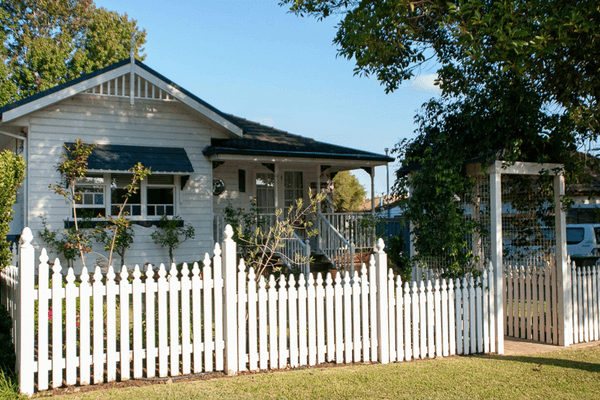
Share
Housing values rise 0.6% in June as RBA rate cuts drive five consecutive months of growth. Expert analysis reveals regional winners, rental trends, and market outlook for 2025
The Australian housing market has reached a pivotal moment. After months of uncertainty, national dwelling values surged 0.6% in June 2025, delivering the fifth consecutive month of growth and signalling a clear shift in market momentum.
This turnaround follows the Reserve Bank of Australia’s strategic interest rate cuts in February and May, which have reignited buyer confidence and reshaped property market dynamics across the country.
According to the latest Cotality Home Value Index, the June quarter delivered 1.4% growth, a significant improvement from the 0.9% recorded in the first quarter. But what does this mean for buyers, sellers, and investors?
The rate cut effect reshaping market dynamics
The February interest rate cut marked a definitive turning point for Australian property markets. Cotality’s research director, Tim Lawless, observed this shift firsthand.
“The first rate cut in February was a clear turning point for housing value trends,” Mr Lawless said. “An additional cut in May, and growing certainty of more cuts later in the year have further fuelled positive housing sentiment, pushing values higher.”
Current growth in historical context
While growth is accelerating, the current pace remains measured compared to previous market cycles. The 1.4% quarterly increase is well below the 3.3% peak recorded in mid-2023 and substantially lower than the extraordinary 8.1% quarterly peak during the pandemic’s height.
This moderation suggests the market is finding a more sustainable rhythm after recent volatility, with growth driven by genuine demand rather than speculative activity.
Market activity trends
The housing rebound occurs against a backdrop of relatively subdued sales activity. Housing turnover is tracking at a 4.9% annualised pace through the first half of 2025, slightly below the decade average of 5.1%.
This indicates that while prices are rising, market participation remains selective as buyers and sellers carefully assess the evolving conditions.
Bank forecasts signal more relief ahead
Major Australian banks are anticipating further monetary policy support. ANZ, CBA, NAB, and Westpac all predict additional 25 basis point cuts that could see the cash rate reach 3.35% by year-end, with some economists suggesting rates could fall further in early 2026.
The RBA maintains a cautious but data-dependent approach, focusing on ensuring inflation returns sustainably to the 2.5% target. Economic growth forecasts for 2025 range from 1.6% to 2.1%, with unemployment expected to rise modestly to around 4.5%.
Regional markets driving national performance
While national figures tell one story, regional variations reveal where the real action is happening across Australia’s diverse property markets.
Darwin reaches new heights
Darwin leads the charge with an impressive 4.9% quarterly growth, propelling dwelling values to new record highs. This achievement is particularly significant as it finally surpasses the mining boom peak recorded in May 2014, demonstrating the market’s complete recovery and continued momentum.
Perth and Brisbane maintain strong momentum
Perth delivered solid 2.1% quarterly growth, while Brisbane recorded 2.0%, showing that market strength extends well beyond the traditional powerhouses of Sydney and Melbourne.
These markets benefit from a combination of local economic strength, population growth patterns, and crucially, relative affordability compared to the most expensive capital cities.
Supply constraints supporting growth
A critical factor supporting price growth is the persistent shortage of available properties. Advertised stock levels are tracking 5.8% below the same time last year and 16.7% below the previous five-year average.
SQM Research data confirms that total available properties nationwide remain well below normal levels, creating competitive conditions that particularly benefit sellers with quality properties in desirable locations.
The rental market reality check
While property values climb, the rental market tells a different story about affordability pressures across Australian households.
Growth momentum slowing significantly
The national rental index rose just 1.3% through the June quarter, marking the lowest Q2 change since 2020. Annual rental growth has eased dramatically to 3.4%, down from a peak of 9.7% in November 2021.
This moderation reflects the limits of what households can realistically afford, even in a supply-constrained market.
Affordability constraints reach breaking point
Tim Lawless attributes this slowdown to fundamental affordability barriers. “Rental affordability is a key factor keeping a lid on rental growth,” he said. “Assuming the median rent and median household income, rental households are now dedicating around one third of their pre-tax income to paying rent.”
This level of rental burden represents a significant squeeze on household budgets and limits the capacity for further substantial rent increases.
Vacancy rates show modest improvement
SQM Research reports the national vacancy rate edging up from 1.2% to 1.3% in June. While Sydney and Melbourne recorded minor increases in available rental properties, most other capitals—including Brisbane, Perth, Adelaide, Darwin, and Hobart—remain below 1%.
ABS data supports this trend, showing rental inflation has steadily moderated from its December 2023 peak of 8.5% to around 5.5% by April 2025.
Construction challenges constraining supply response
The property market’s ability to respond to demand continues to be hampered by significant structural challenges in the construction sector.
Building approvals fall short of targets
ABS data reveals only 169,000 new dwellings were approved in 2024, representing a 24% drop from the decade average. This falls dramatically short of the National Housing Accord’s target of 240,000 new homes annually—a target essential for addressing Australia’s housing shortage over the next five years.
Cost pressures intensifying
Construction costs continue their upward trajectory, with building costs expected to rise between 4.5% and 6% across most cities in 2025. Infrastructure costs are forecast to average 5.5%, with Brisbane experiencing the highest cost escalation at 6.5%.
Critical workforce shortages
The construction industry faces a severe labour shortage, with Infrastructure Australia identifying a national shortfall of 197,000 infrastructure workers. This shortage is compounded by declining productivity—labour productivity in residential construction has fallen 12% since 1995, even accounting for quality improvements and larger housing sizes.
Industry financial stress
ASIC data reveals 3,948 construction businesses entered administration between April 2024 and April 2025. This financial strain creates additional uncertainty about the industry’s capacity to deliver the housing supply Australia desperately needs.
Expert predictions and market outlook
Leading economic analysts are providing crucial insights into where the market is heading through the remainder of 2025 and beyond.
KPMG forecasts moderate but steady growth
KPMG predicts house prices will rise nationally by 3.3% over the next 12 months, with stronger 6% growth expected in 2026. Their analysis suggests price growth will be more pronounced in the second half of 2025, aligning with anticipated interest rate cuts.
Unit prices are forecast to outperform houses, with KPMG predicting 4.6% growth in 2025 and 5.5% in 2026. This stronger unit performance reflects their role as a more accessible entry point amid ongoing affordability challenges.
Population pressures moderating
Net overseas migration is expected to slow to around 340,000 by mid-2025 as the post-COVID catch-up effect moderates. This gradual reduction in population pressure may help ease some demand pressures on both housing and rental markets.
Investment sentiment improving
Investment activity is showing encouraging signs, with investors making up 38.3% of all new financing in recent months—well above the 33.8% decade average. This increased investor participation is helping add rental stock to the market, which should eventually assist with rental availability.
Strategic implications for market participants
Current market conditions present distinct opportunities and challenges depending on your position in the property market.
For potential buyers
Interest rate cuts are improving borrowing capacity and reducing the ongoing cost of homeownership. However, competition remains intense for quality properties, particularly in areas showing strong growth fundamentals.
The timing of additional rate cuts will be crucial. Those positioned to act quickly may find opportunities before increased competition emerges following further rate reductions.
However, affordability constraints remain severe, with only 14% of median income households currently able to afford homeownership nationally—dropping to just 10% in Sydney.
For current property owners
Tight stock levels and improving buyer sentiment are supporting price growth across most markets. Properties with strong fundamentals in desirable locations are likely to outperform, while those in oversupplied or less attractive areas may see more modest gains.
The combination of limited supply and returning confidence creates favourable conditions for sellers, though the pace of growth remains moderate compared to previous boom periods.
For investors and regional opportunities
Regional markets are presenting compelling opportunities for both buyers and investors. Darwin’s record-breaking performance, along with solid growth in Perth and Brisbane, demonstrates that opportunities exist beyond the traditional focus on Sydney and Melbourne.
Areas like Townsville, the Sunshine Coast, and regional Queensland centres offer affordability advantages that are attracting buyers from expensive capital cities, creating potential for continued outperformance.
Navigating the evolving market landscape
Australia’s housing market in 2025 is characterised by gradual recovery supported by monetary policy, but constrained by fundamental supply and affordability challenges.
Tim Lawless’s observation about the February rate cut being a turning point has proved prescient, with five consecutive months of growth demonstrating clear responsiveness to policy changes. The market is finding its footing after recent volatility, but sustainable growth depends on addressing longer-term structural challenges.
The rental market provides important context about broader affordability limits. Despite tight vacancy rates, rental growth moderation highlights what households can realistically sustain—constraints that may eventually apply to purchase prices as well.
Supply shortages remain the fundamental challenge. While construction difficulties support current property values by limiting new stock, they also perpetuate the affordability crisis that constrains market participation.
As the market continues evolving, the interplay between interest rates, supply constraints, and affordability pressures will determine whether current momentum can be sustained. The data suggests cautious optimism, but success in navigating this environment requires understanding both the opportunities and the underlying challenges shaping Australia’s property landscape.
Further questions
How are interest rate cuts affecting Australian property prices
Which regions are performing best in the current property market
What is happening with rental prices and vacancy rates in 2025
What are the main challenges facing property construction and supply
What do experts predict for property prices in the remainder of 2025
This is general information only and is subject to change at any given time. Your complete financial situation will need to be assessed before acceptance of any proposal or product.





